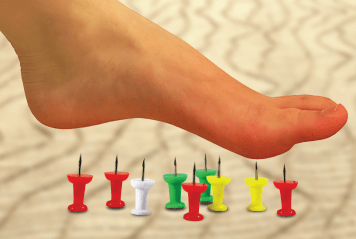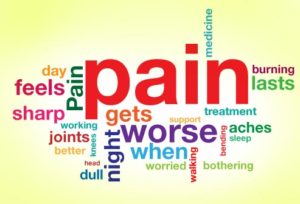
Diagnosed with SMM, SPB, or MGUS?
Learn how you can stall the development of full-blown Multiple Myeloma with evidence-based nutritional and supplementation therapies.
Click the orange button to the right to learn more.
- You are here:
- Home »
- Blog »
- Pre-Myeloma »
- MGUS, SMM Neuropathy
MGUS, SMM Neuropathy

“Peripheral Neuropathy is not only induced by treatment, as studies have found percentages of PN in newly diagnosed MM patients in 13% [2], 11% [11], 54% [13], and 7.2% [14]…”
Peripheral neuropathy aka nerve pain is a common symptom of the pre-myeloma patient. My guess is that many people reading this post experience burning and/or tingling in their extremities. Until you are diagnosed with either MGUS or SMM, you probably have no idea why you feet and hands hurt.
The two studies linked and excerpted below explain two things:
- First, MGUS and SMM patients often have low levels of vitamin D3 in their blood-
- Second, low levels of vitamin D3 pre-dispose a person to both peripheral neuropathy (nerve pain), bone damage and pre and full multiple myeloma.
To clarify what “low levels” of vitamin D3 in the blood are, the best method to determine your blood levels are to get a blood test. Yes, that’s an effort but you’d be surprised how easy it is.
According to research-“A level of 20 nanograms/milliliter to 50 ng/mL is considered adequate for healthy people. A level less than 12 ng/mL indicates vitamin D deficiency.”
I order a testing package from Lab Corp. through my source for supplements (yes vitamin D3)- Life Extension Foundation. I am a member of LEF. I buy a bunch of different nutritional supplements…vitamin D3, curcumin, resveratrol, etc. etc.
If you have recently been diagnosed with either MGUS or SMM, you may have been told either that there is nothing for you to do beside regular diagnostics or a clinical trial if you have high-risk SMM. The studies below indicate that vitamin D3 supplementation could help possible PN, could enhance bone health and could reduce your risk of a full multiple myeloma diagnosis.
At this point in this post I have to add that there are a host of evidence-based, non-conventional therapies shown to enhance bone health as well as reduce the risk of a full MM diagnosis.
Further, I have to wonder if there are other nutritional supplements that can reduce PN, strengthen bones and reduce the risk of a MM diagnosis in the same way that vitamin D3 does.
To Learn More about nerve pain caused by monoclonal proteins (not by chemotherapy) read the posts linked below-
- Monoclonal Gammopathy, Nerve Pain
- SMM, MGUS, Fibromyalgia, Nerve Pain?
- Covid Vaccination, Nerve Pain, MGUS?
- MGUS – Nerve Pain
If you have recently been diagnosed with MGUS or SMM you may have questions. Scroll down the post, ask a question or make a comment. I will reply to you ASAP.
To Learn About Pre-Myeloma (SPB, MGUS, MGCS, SMM), diagnostics, symptoms and therapies- click now
Hang in there,
David Emerson
- MM Survivor
- MM Cancer Coach
- Director PeopleBeatingCancer
Recommended Reading:
PeopleBeatingCancer Side Effects Program
Paraproteinemic neuropathy
“Monoclonal proteins (paraproteins) may be detected in the sera in ∼1% of the general population and are frequently associated with peripheral neuropathy. Paraproteinemic neuropathy (PPN) is most commonly associated with monoclonal gammopathy of undetermined significance, and may also occur in the context of multiple myeloma, amyloidosis, cryoglobulinemia, and other hematologic malignant and nonmalignant conditions…
PPN is frequently associated with autoantibodies targeting peripheral nerve antigens, including anti-MAG and anti-GM1 antibodies.
Therapy is mostly based on the treatment of the underlying hematologic disorder. Risks and benefits should be carefully evaluated as treatment may be associated with considerable morbidity. Rituximab may be helpful in treatment of IgM-PPN, and paraproteinemic multifocal motor neuropathy usually responds to IVIG.
Plasmapheresis is more effective with IgG/IgA paraproteinemic neuropathies. At this time it is not clear whether mere presence of neuropathy warrants more aggressive treatment of otherwise quiescent hematologic malignances (e.g. smoldering myeloma).”
High prevalence of peripheral neuropathy in multiple myeloma patients and the impact of vitamin D levels, a cross-sectional study
Peripheral neuropathy (PN) is common in patients with multiple myeloma (MM). We hypothesized that the relationship between hypovitaminosis D and PN described in diabetes mellitus patients may also be present in MM patients…
Methods- To study this potential association, we assessed the incidence of hypovitaminosis D (vitamin D < 75 nmol/L [= 30 ng/mL]) in smouldering and active MM patients in two Dutch hospitals. Furthermore, a validated questionnaire was used to distinguish different PN grades.
Results-Of the 120 patients included between January 2017 and August 2018, 84% had an inadequate vitamin D level (median vitamin D level 49.5 nmol/L [IQR 34–65 nmol/L]; mean age: 68 years [SD ± 7.7]; males: 58%). PN was reported by 69% of patients (n = 83); however, of these 83 patients, PN was not documented in the medical records of 52%. An association was found between lower vitamin D levels and higher incidence of PN in the total population (P = 0.035), and in the active MM patients (P = 0.016).
Conclusion-This multi-centre cohort study showed that PN and hypovitaminosis D are common in MM patients, and addressing low vitamin D levels in the treatment of MM patients might be beneficial in reducing the risk of PN. More attention for PN is warranted, as PN is underreported by clinicians. Further research is needed to fully understand the implications of vitamin D in the development of PN in patients with MM.
PN is not only induced by treatment, as studies have found percentages of PN in newly diagnosed MM patients in 13% [2], 11% [11], 54% [13], and 7.2% [14]. Also smouldering MM patients, who generally do not receive anti-myeloma treatment, may develop PN as a result of paraproteinemia [15, 16]. MM itself has the capacity to provoke PN via several mechanisms; the M protein produced by the malignant plasma cells, deposits of the light-chain immunoglobulins (amyloidosis) in nerve cells, or radicular or medullar compression in myeloma bone disease can directly damage nerve cells. Also, hyperviscosity of the blood as a result of the high M protein level slows down blood flow, causing neurological symptoms [17]…
Vitamin D Deficiency
Getting enough vitamin D may also play a role in helping to keep you healthy by protecting against the following conditions and possibly helping to treat them. These conditions can include:
- Heart disease and high blood pressure.
- Diabetes.
- Infections and immune system disorders.
- Falls in older people.
- Some types of cancer, such as colon, prostate and breast cancers.
- Multiple sclerosis…”


